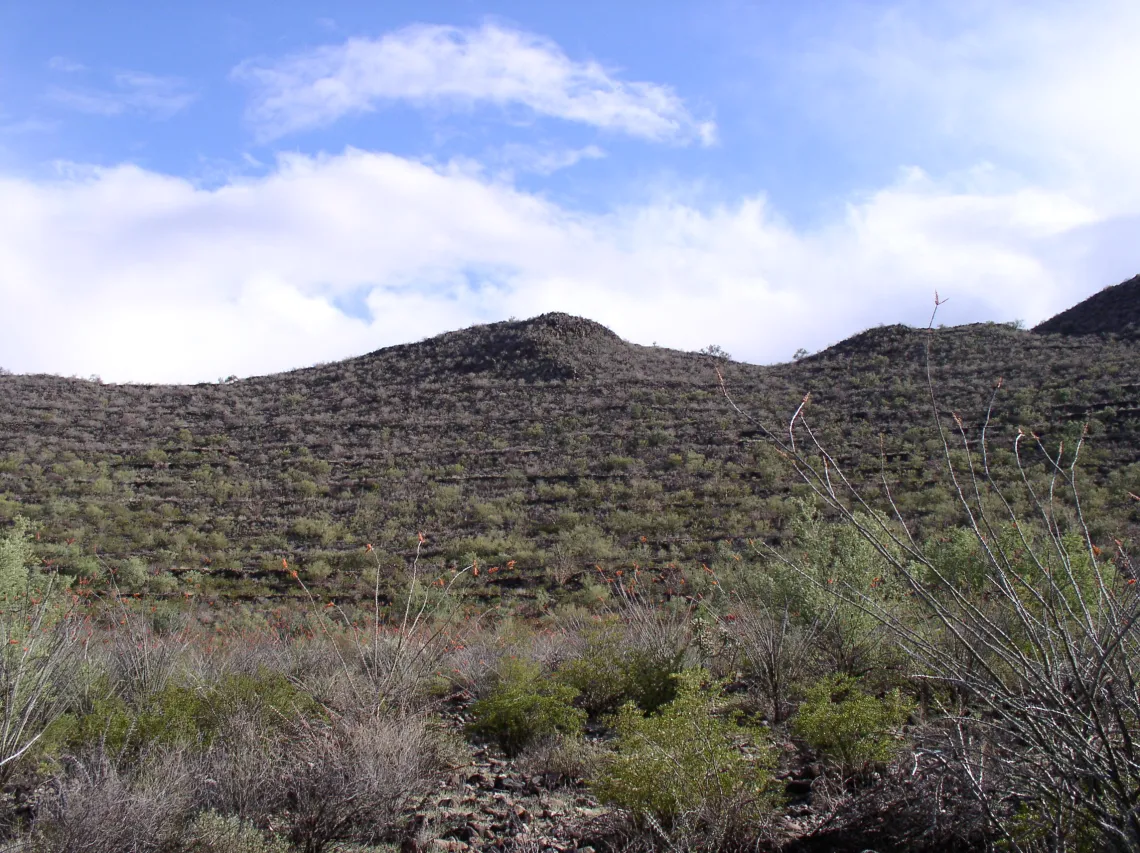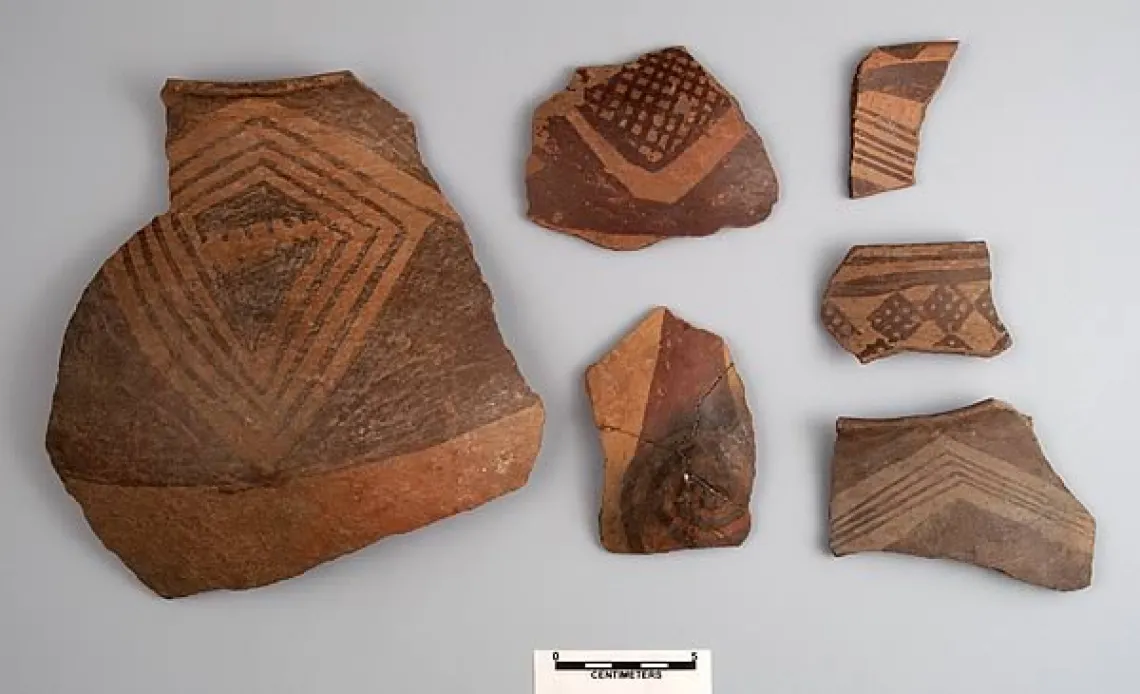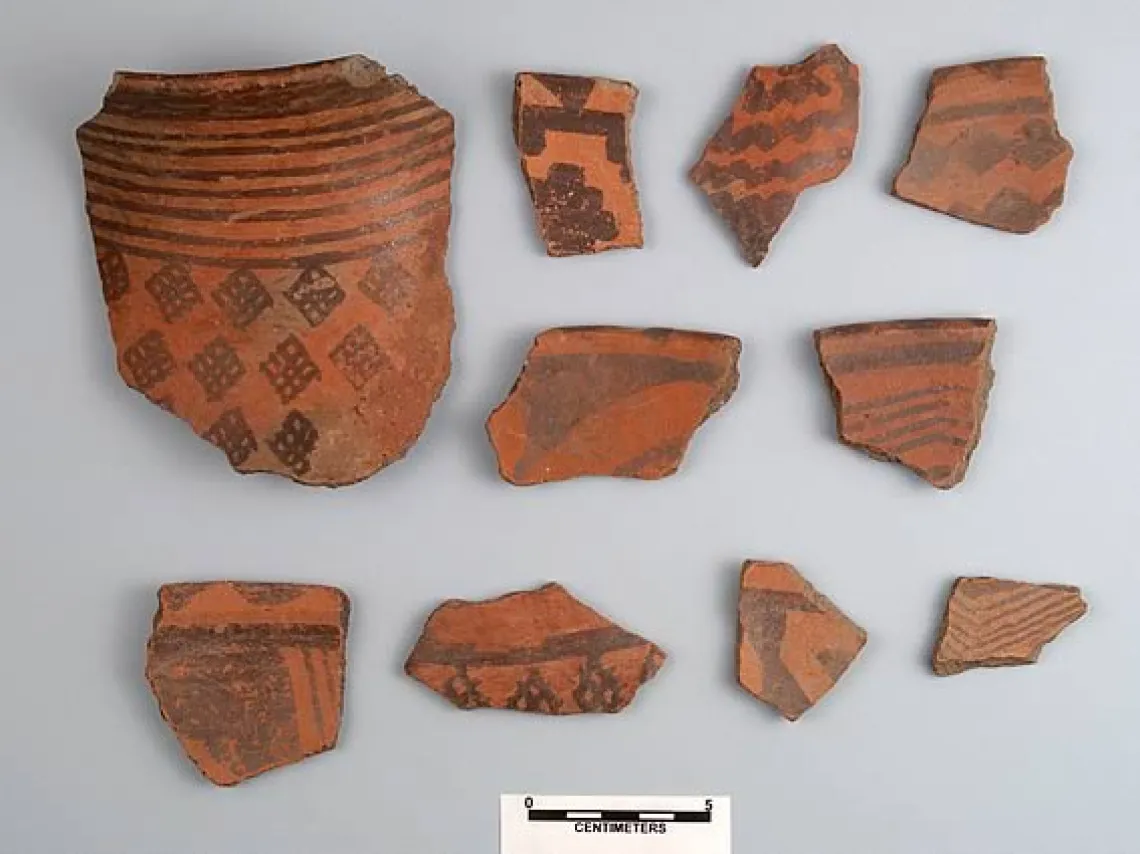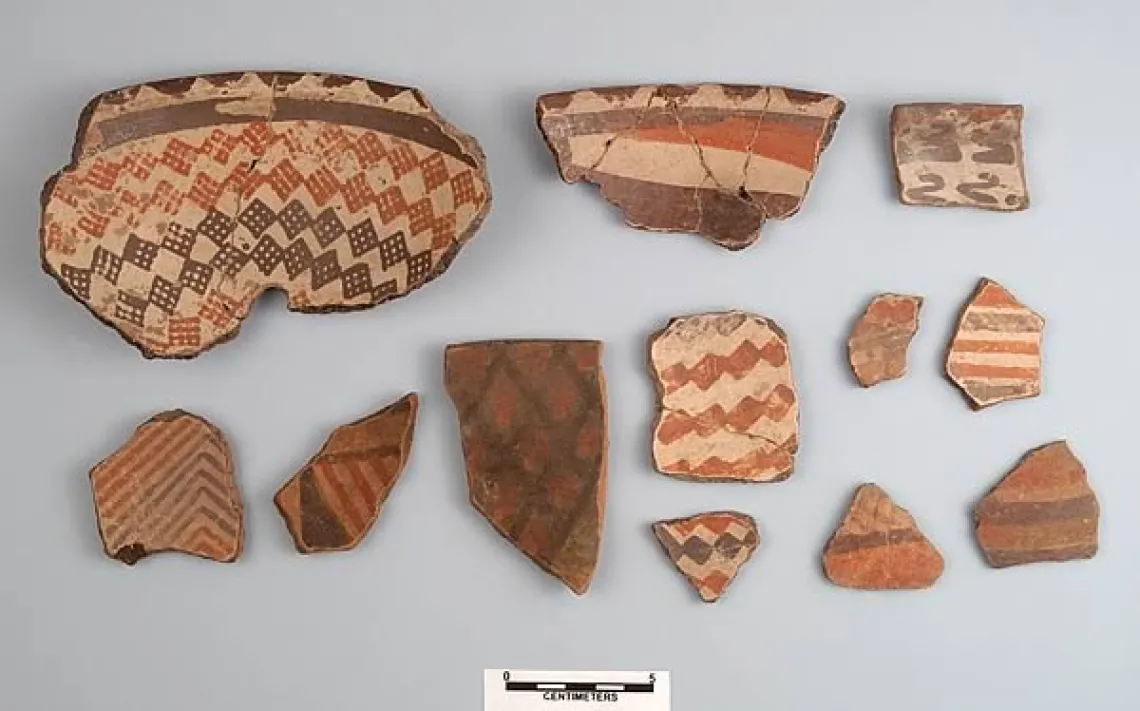
Terraced slopes of the Las Trincheras site in northern Sonora.
Another tradition present in the southern regions of the American Southwest and in Northwest Mexico is the Trincheras Culture. Largely contemporary with the Hohokam, it shared some cultural features. Unfortunately, the Trincheras culture is poorly known at present. Not much research has addressed this group, which primarily inhabited the Altar and Magdalena River valleys of northwestern Sonora, although Trincheras sites extend into southern Arizona. The area along the modern international border was a transition zone between the Hohokam and Trincheras cultures in the late prehistoric period (A.D. 800–1300), with sites characterized by elements of both traditions.

Examples of Tricheras Purple-on-plain pottery (A.D. 700 - A.D. 1100) — the decorated pottery associated with the Trincheras Culture of Northern Sonora. The designs are painted in a purple colored pigment made of specular hematite against an unslipped brown background. The elements include large designs with open linework, diamonds, interlocking scrolls and cross-hatchure.
Trincheras populations farmed the river bottoms of Sonora and also gathered wild resources and hunted in the surrounding hills and mountain chains. Some of these people lived in houses constructed in shallow depressions (pit houses)—much like the Hohokam to the north, while others lived on terraces built into the sides of the volcanic hills that dot the landscape.
These terraced sites are often termed Cerros de Trincheras (“terraced hills”). The terraces that characterized these settlements served several functions. They were house platforms for small structures constructed of the local volcanic rock and—because they caught water running off the slope of the hill—they also were planted with crops for house gardens and small fields. They may also have served a defensive role: local populations could withdraw to these platforms and bombard their attackers with spears and stones. Ritual, or ceremonial, structures are often found on the summits and at the bases of these hills.

Examples of Trincheras Purple-on-red pottery (A.D. 700 - A.D. 1100) associated with the Trincheras Culture of Northern Sonora. The designs are painted in a purple colored pigment against a red slipped background. The elements include large designs with open linework, diamonds, interlocking scrolls and cross-hatchure.

Nogales and Altar Polychrome pottery of the Trincheras Culture of Northern Sonora (A.D. 750 - A.D. 1100). Nine pieces of Nogales Polycrhrome characterized by purple and red pigments applied over a white slip. Three fragments of Altar Polychrome (lower left), with purple and red pigments applied over an unslipped, reddish-brown surface.
Trincheras ceramics are similar to those of the Hohokam in that they are based on a brown-colored pottery, but they are decorated with a purple pigment made from ground hematite (iron mineral) that often is in a crystalline form, which gives the pigment a sparkle effect.
These purplish hematite paints were sometimes combined with red ochre paint that produced multi-colored designs that were occasionally applied over a white clay slip. Shell bracelets and simple forms of beads and pendants have been found at Trincheras sites. Hopefully the Trincheras culture will receive closer research attention in the future, and our limited understanding will be enhanced.





